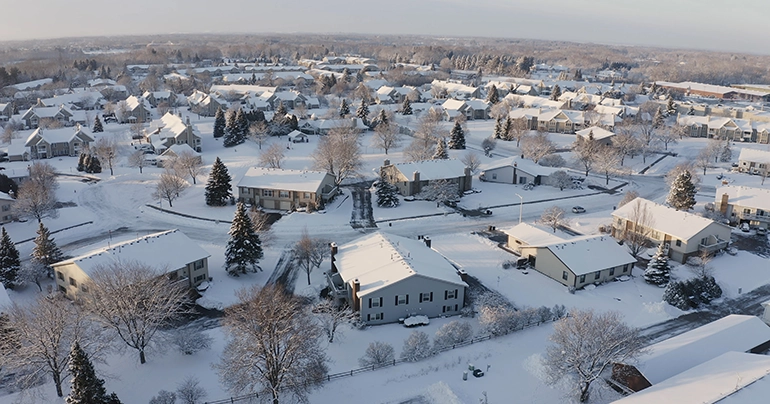Why Winter is the Best Time to Test for Radon
2 minute read
As temperatures fall and we spend more time indoors, it’s crucial to consider the quality of the air in our homes—particularly the potential danger of radon exposure. Radon is a silent threat: a colorless, odorless, radioactive gas that can seep into homes undetected, posing serious health risks if left unchecked. The only way to know if you’re being exposed in your home is to test. With winter creating ideal conditions for accurate radon testing, now is the time to understand and address this hidden hazard to protect your indoor environment.
What is Radon?
Radon is a dangerous gas that poses significant health risks when present in high concentrations. It’s a natural byproduct of the breakdown of uranium in soil, rocks, and water. The EPA classifies radon as a carcinogen, meaning it has the potential to cause cancer. In fact, radon is the leading cause of lung cancer in nonsmokers and is responsible for 21,000 deaths each year.
While the EPA recommends annual testing if you do not have an active radon system and every other year if your home does, we always recommend testing once per year to monitor radon levels.
Seasonal Variation in Radon Levels
Radon levels are generally higher during the winter months compared to other seasons. This is largely because houses are sealed tightly during colder weather. As temperatures drop, homeowners keep windows and doors closed to conserve heat, which traps radon gas inside and leads to higher radon levels.
Cold weather also exacerbates radon infiltration due to the stack effect. The stack effect occurs when warm air rises and escapes through openings in higher levels, such as attics or chimneys. This creates negative pressure in the lower levels, drawing air from the ground, including radon gas, into the house.
Additionally, frozen ground during winter prevents radon from escaping into the atmosphere, resulting in higher concentrations around home foundations. As a result, radon can easily seep into basements and crawl spaces through cracks and gaps, increasing indoor radon levels.
Advantages of Winter Radon Testing
So, why is winter the optimal season for radon testing? There are a few compelling reasons. First, during the colder months, windows and doors are generally kept closed, creating a controlled environment that can give more accurate radon test results. Second, radon levels tend to be higher in winter due to reduced ventilation. Lastly, addressing high radon levels found in winter allows for mitigation before the arrival of warmer weather.
Proactively test this winter with AprilAire Short-Term Radon Test Kits. Do it yourself with our step-by-step instructions or contact your local AprilAire Healthy Air Professional.
